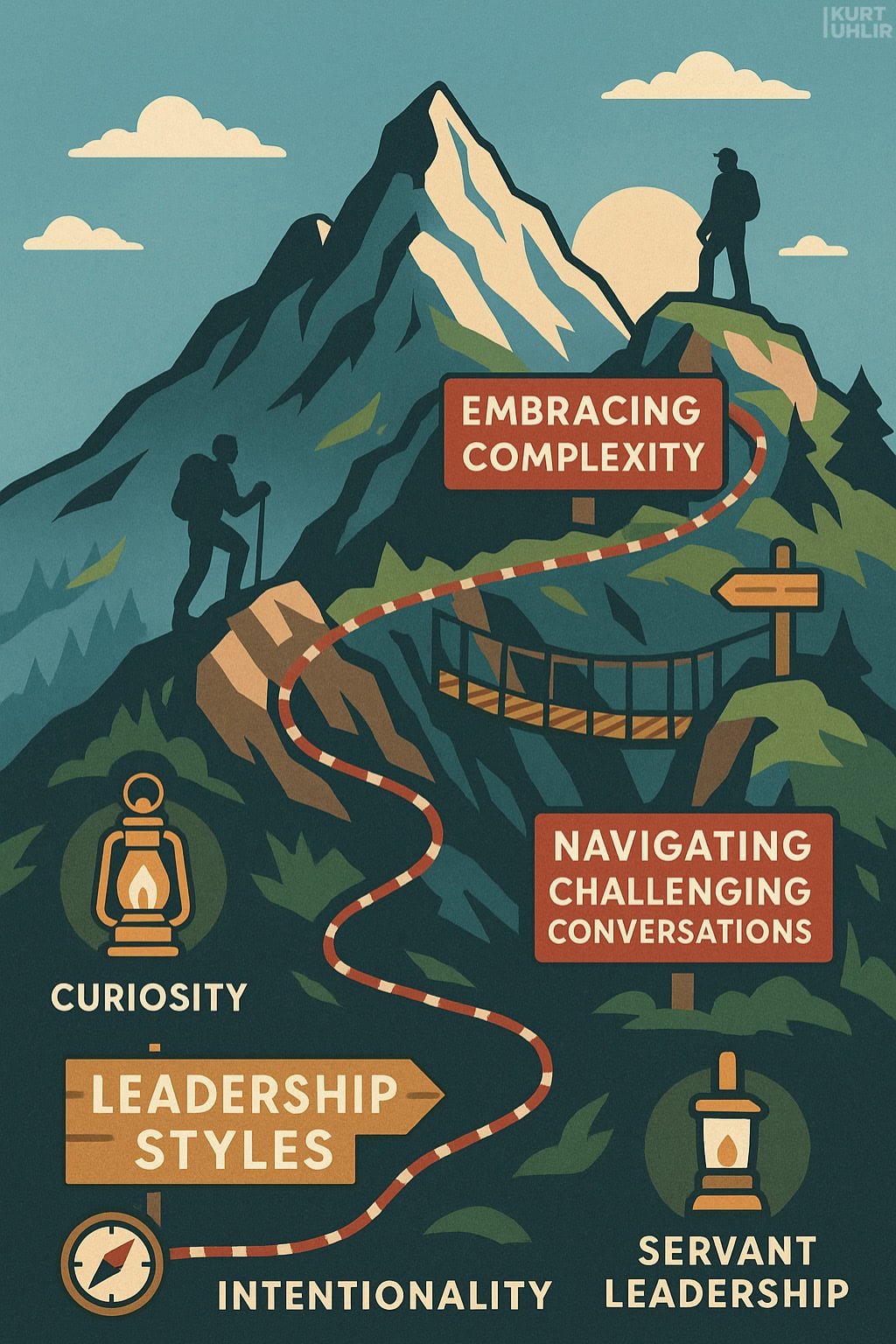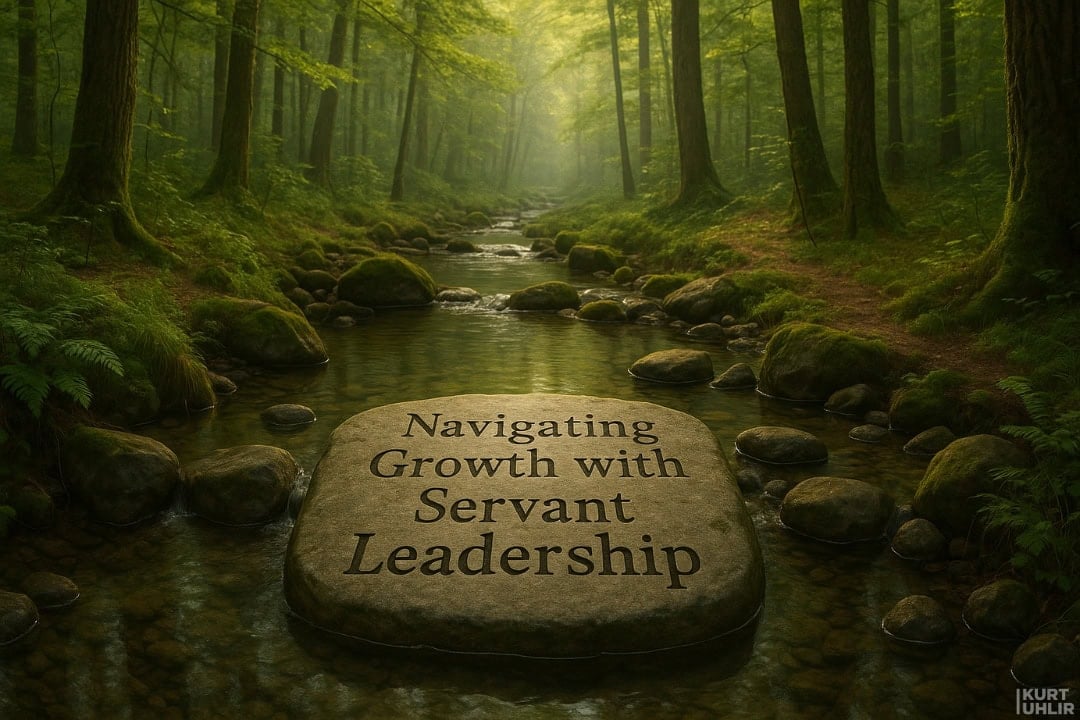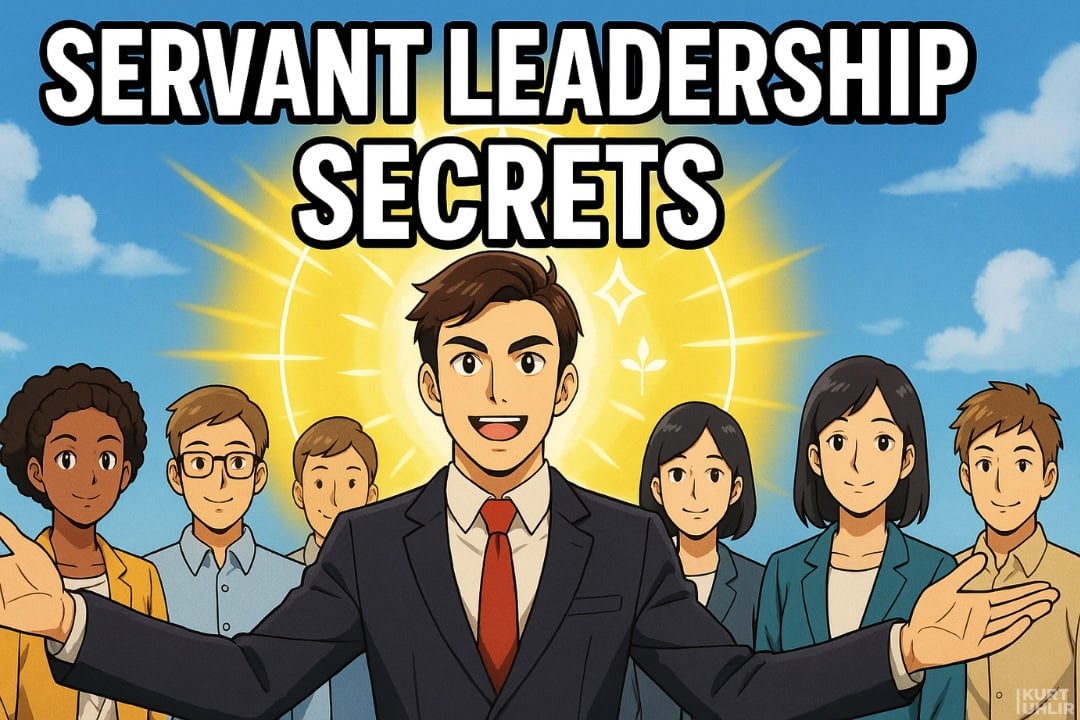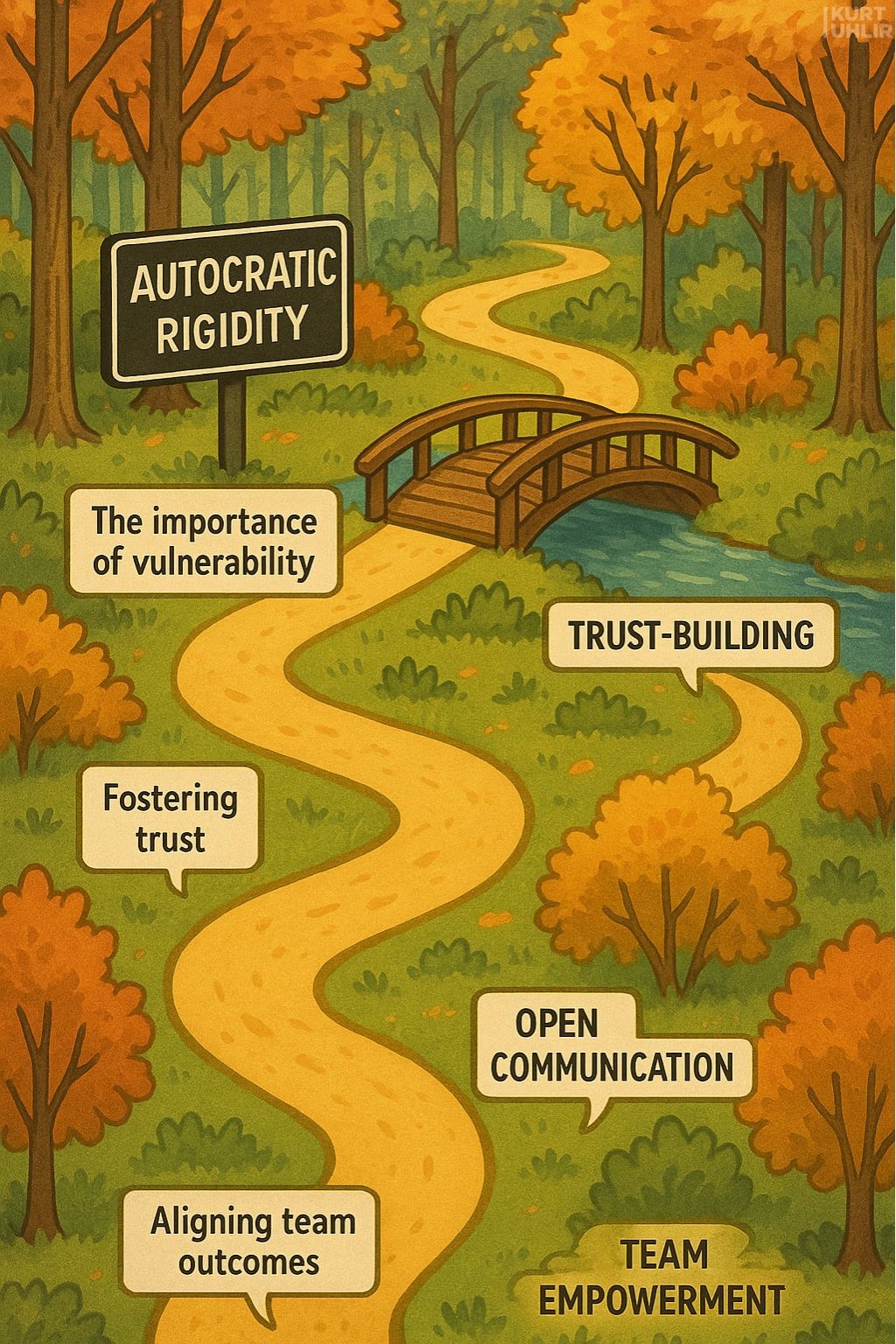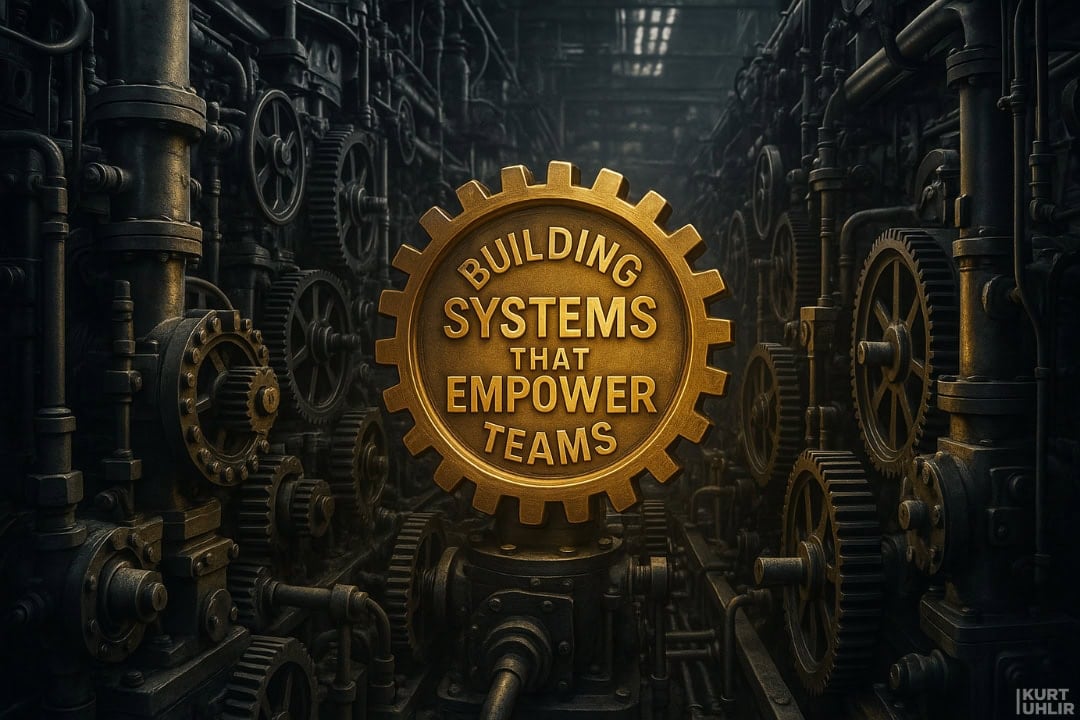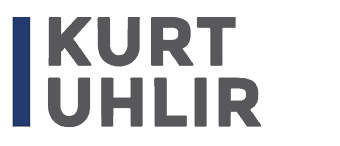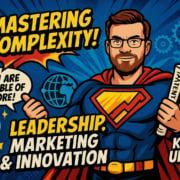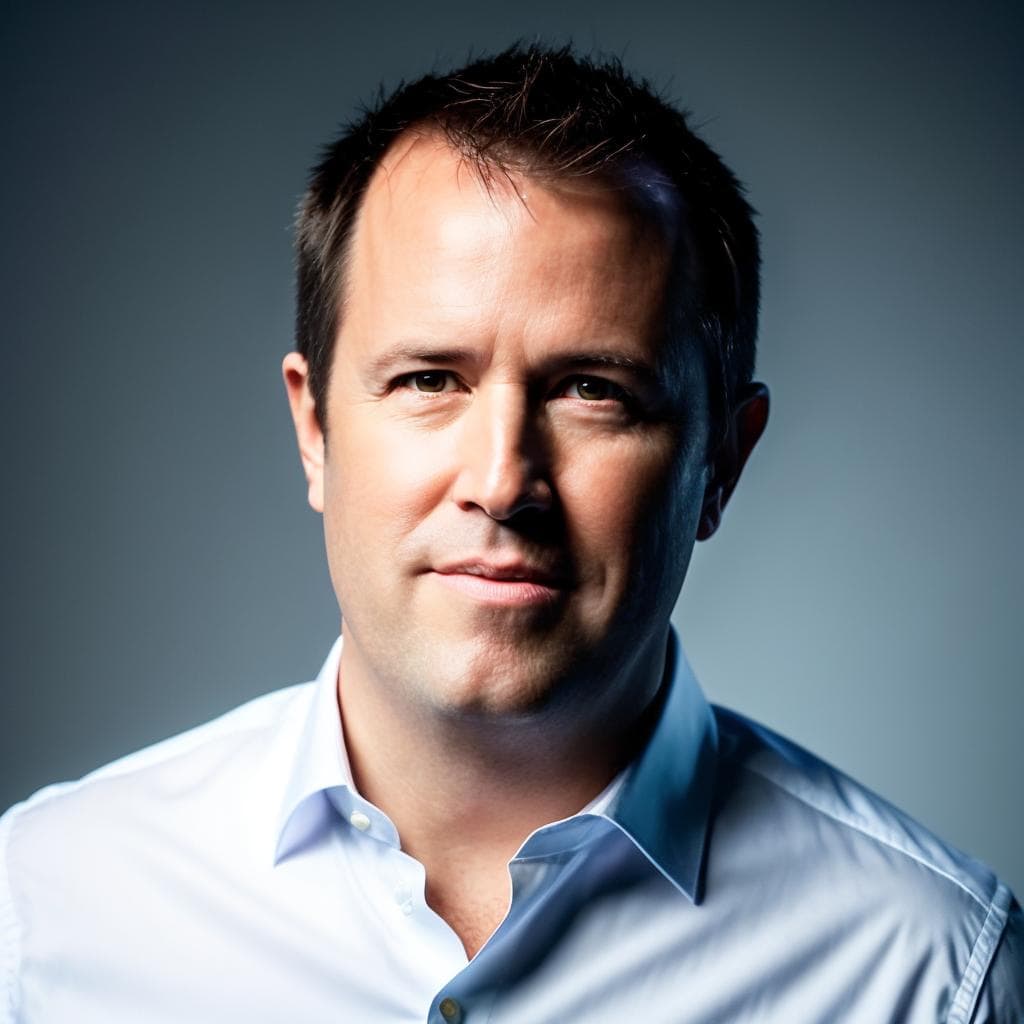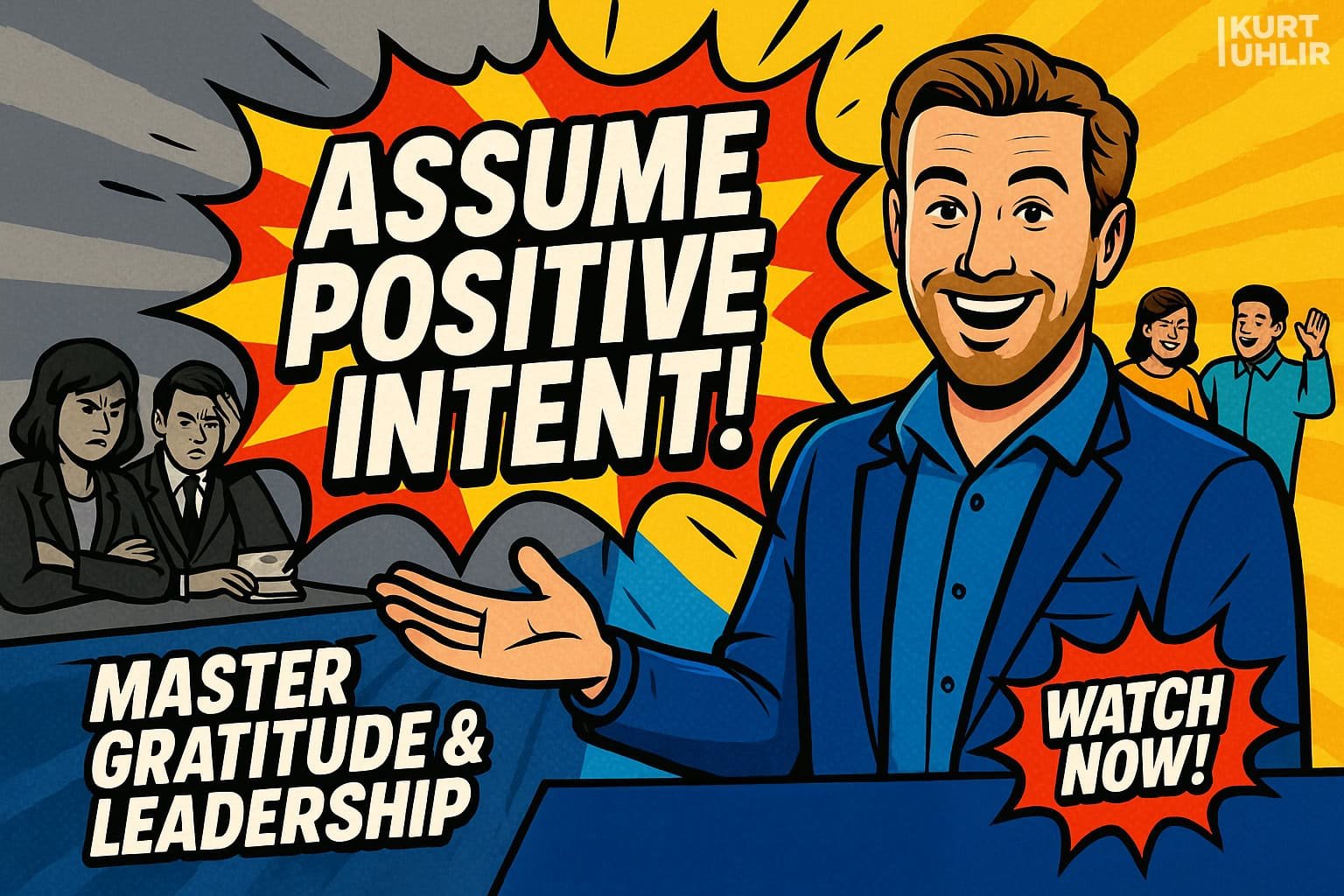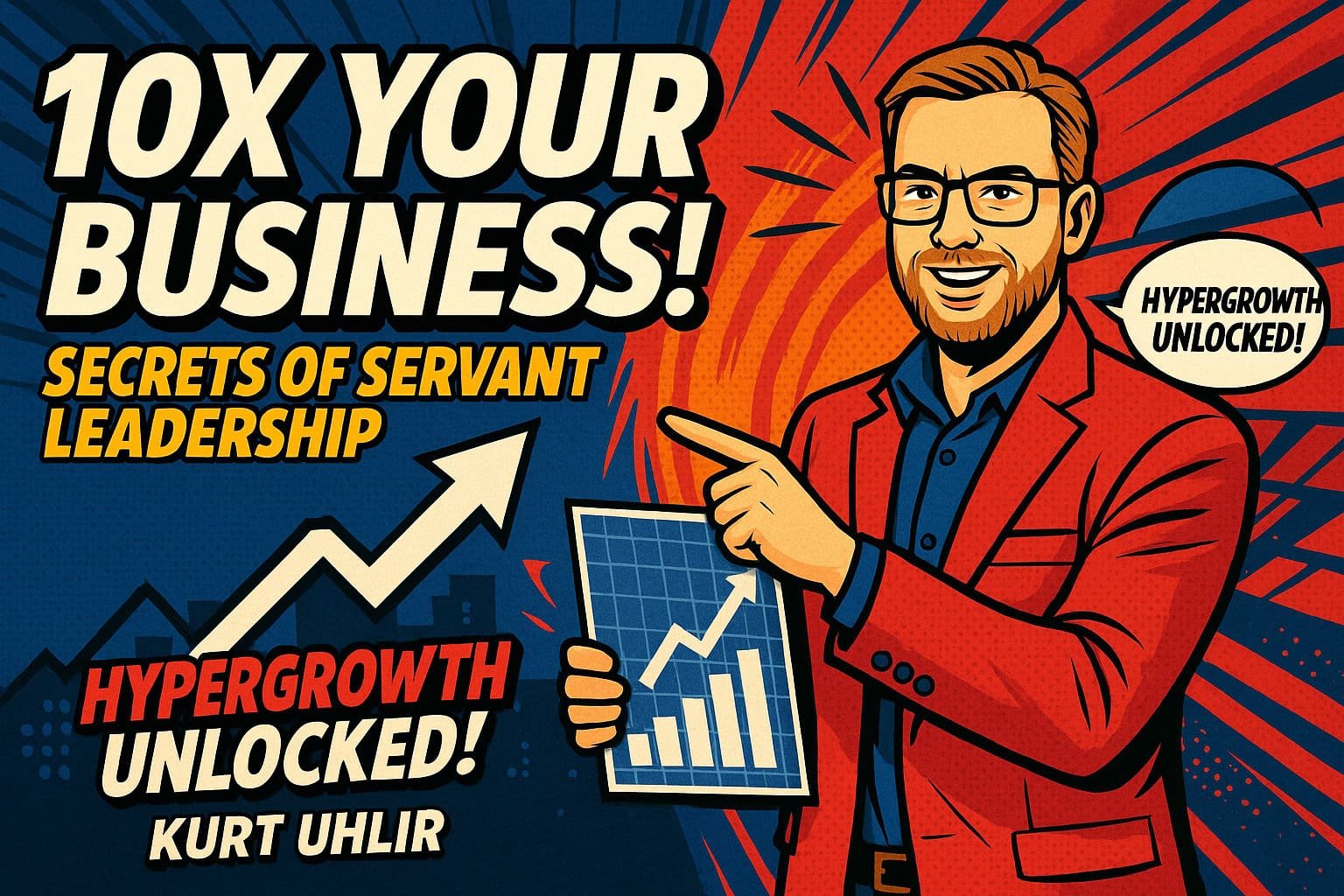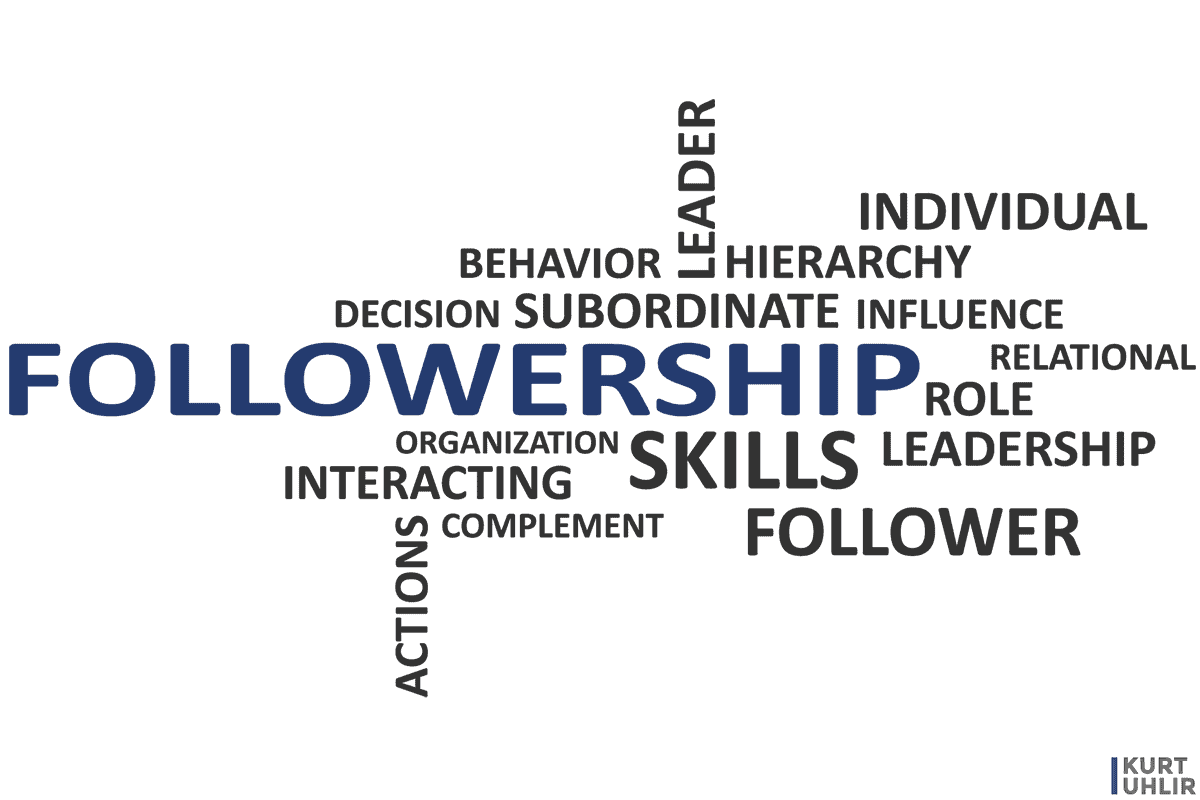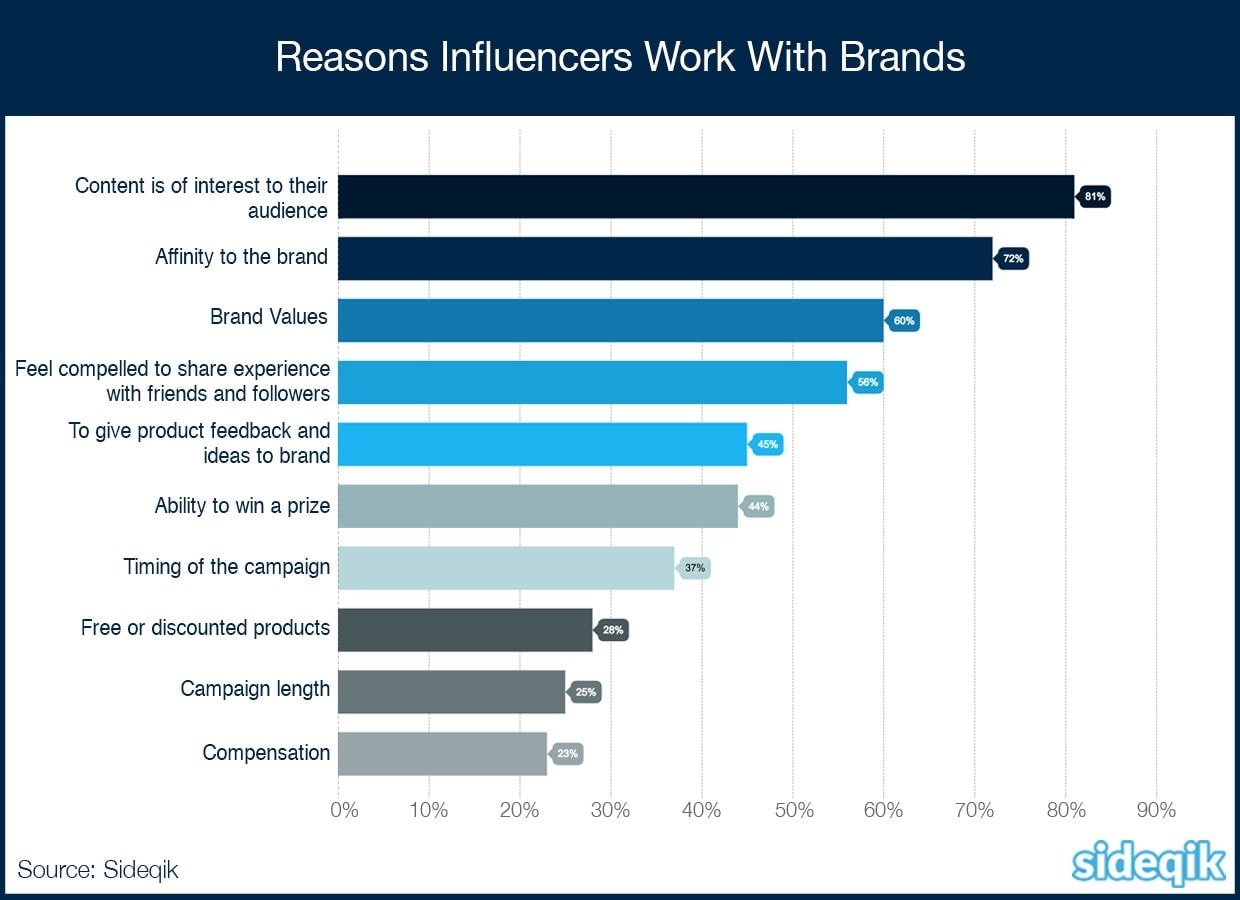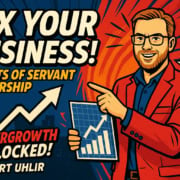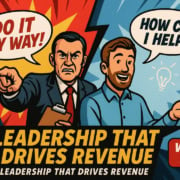High-Achieving Teams and Real Business Growth: My Conversation with Legendary Leaders Host Cathleen O’Sullivan
What It Really Takes: Leadership That Serves, Operates, and Scales
I’ve seen it over and over: teams chase motion over momentum. Fast growth is mistaken for true progress, and leadership is defined by who gets their way, not what gets built. If I’ve learned anything after decades in company-building and marketing, it’s this—longevity is won by leaders who get their hands dirty, serve their teams, and never mistake activity for outcomes.
That’s at the heart of a recent, wide-ranging conversation I had with Cathleen O’Sullivan on her Legendary Leaders Podcast. We dug into the patterns behind scaling organizations, unvarnished stories from my early days, and the trigger point that snapped me out of high-performing, hard-charging, and frankly, sometimes toxic leadership styles. Cathleen brought challenging questions; she met my directness with her own honest stories.
This dialogue is for every operator or executive who’s achieved big things but suspects there’s another gear—not just in the work, but in how you grow as a human being and leader.
Legendary Leaders Podcast with Cathleen O’Sullivan
The conversation happened on the Legendary Leaders Podcast with Cathleen O’Sullivan. If you’re new to Cathleen: she’s a high-impact executive coach, deeply focused on leadership wellness, authenticity, and what it means to bring your full self to the table. There’s substance behind her facilitation—she’s led teams, coached leaders across industries, and isn’t afraid to push the conversation when things get real.
Join the thousands that have listened in on our fireside chat via Spotify and Apple Podcasts. Don’t have 1hr 20min to listen to the whole conversation? This article will give you the TLDR.
If this conversation sparks something for you—questions, pushback, or agreement—I’d love to hear your thoughts in the comments below. I read every one.
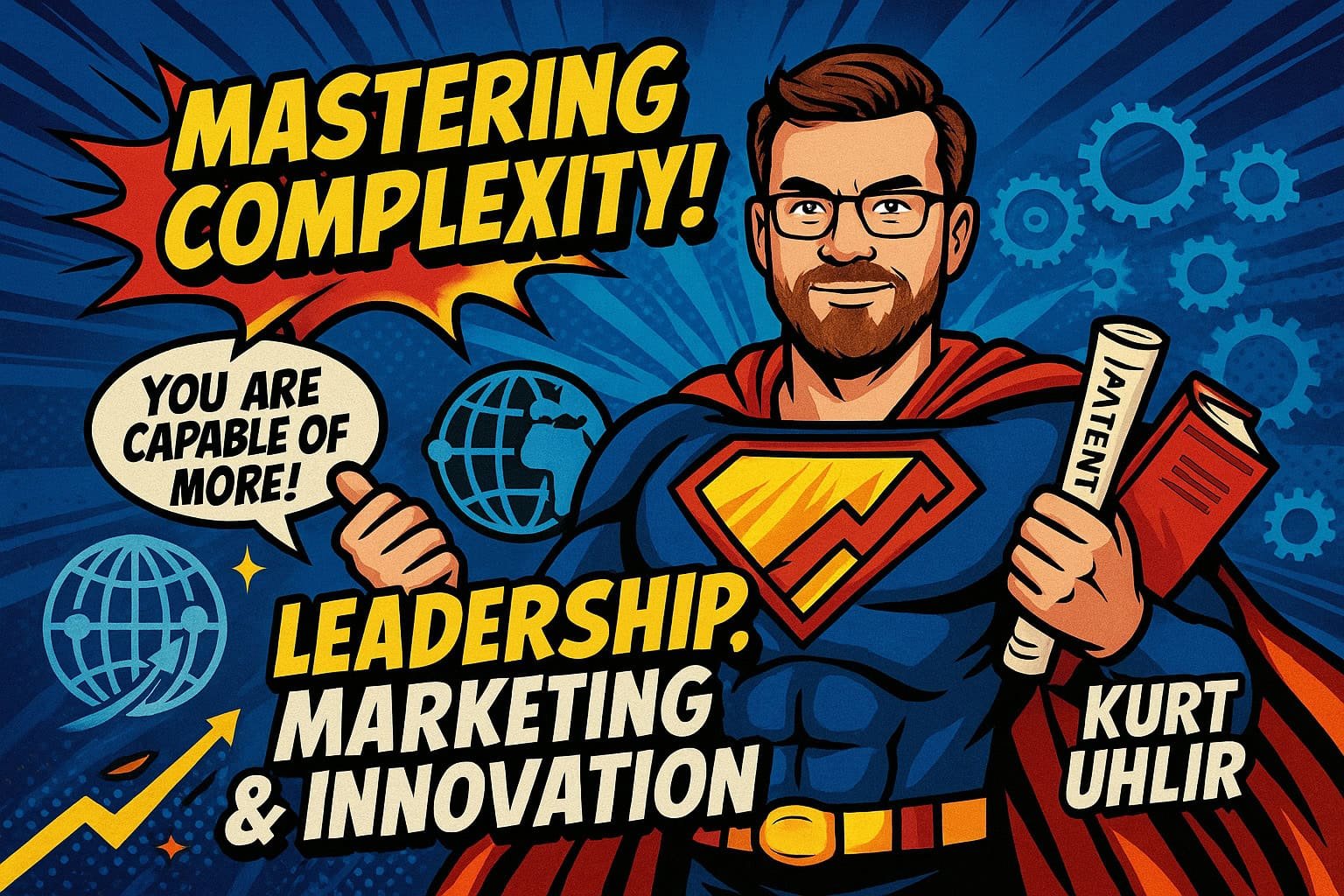
The Operator’s DNA: Why Systems Beat Heroics
My story is rooted in execution, not theory. I started my first business at 13. By 14, I was forming LLCs, hiring accountants (because, as my dad said plainly, “Otherwise you’ll go to jail”), and figuring out payroll taxes—not because it was glamorous, but because it was how things get done. Cathleen highlighted this: “It’s incredible you’ve been an entrepreneur and innovator from such a young age.”
What most people miss: success at scale isn’t about ideas or even relentless work—it’s about systematizing. You build the “factory,” you define the outcomes, and you empower other people to run with it. That’s true in marketing, tech, or even when you’re mowing lawns as a teen. The businesses that outpace their competitors aren’t the “hardest working”—they’re the most operationally disciplined and the fastest to strip away distraction.
I see this on every leadership team I join. People get bogged down in the natural chaos of fast growth. My job as CMO or operator is not just to set direction, but to spot the levers:
- Where are we duplicating effort because clarity is missing?
- Who’s set up to fail simply because the process is opaque or overcomplicated?
- Is our marketing actually driving revenue, or are we confusing busywork for building trust?
Cathleen and I both agreed: systems create freedom—not just for leaders, but for everyone in the organization.
Clarity over Control
What’s surprising to many is how comfortable I am letting go. When you build the machine, you need to trust others to operate it—even if you could do the task “better” yourself. Early in my career, I would grind myself thin, thinking my input at every decision-point was essential.
Now, I log into a dashboard, see the flow, and only step in where there’s a real bottleneck. That’s the shift from heroics to leadership.
As I told Cathleen, “Everybody else is making those decisions or they’re implementing work, because I’m not. You’re hiring people. You have dozens of people on your team because there’s work to be done that you can’t do. The only solution in my mind is to empower them.” Anything less is just self-sabotage—of the business, and of your own sanity.

Chasing Status, Learning Costly Lessons
If you want the unvarnished truth: I didn’t start out as a servant leader. My dad modeled “go deep and wide” learning, but achievement was always tied to attention—especially as a young operator.
When I hacked 232 servers by 14, it wasn’t about curiosity alone; it was about proving something, chasing that next high of “look what I just did.” Whether it was building businesses or punching above my weight on teams, acclaim was the fuel.
Cathleen (rightly) called this “moving past fear, negative self-talk, and doubts,” but for me, those things never really disappeared. They hid behind relentless drive.
By my late twenties, I’d already been part of taking a SaaS company from $85 million to over $1.4 billion, through IPO and dozens of acquisitions. We celebrated grinding. If someone burned out, we moved on; if someone left, they were “dead to us.” This was true not just of leadership culture, but at every layer, and—until it broke me—I thought that was the required price of admission.
I share this because there are real, damaging myths in high-growth environments:
- Only the numbers matter—people are replaceable.
- Vulnerability is weakness; emotion is a liability.
- Days and weeks are for surviving, not for stopping to listen.
Here’s what I know now: those cultures always run out of steam, or out of people. Results come—right up until the human system under the commercial one gives out. I’ve seen it in my teams, my peers, and in myself.
Hitting the Wall: The Trigger That Changed Everything
People don’t change on the sunny days. For me, the wake-up call came fast and brutally:
- I lost a $100M+ deal I’d been on the small team leading.
- My marriage imploded when I learned about a years-long affair.
- My father called with a terminal illness diagnosis.
All of this in a 48-hour window.
I wasn’t prepared. I spiraled. When I reached out to my mentor, crying, explaining how no one at work cared about my personal losses and no one in my personal life understood the weight of losing the deal, his answer was blunt: “Kurt, you’re an asshole.” He wasn’t wrong. That statement was followed soon after by my mother affirming, with love, the truth I’d refused to see.
“I just got all this wave of people crying at work,” I told Cathleen. “I’ve just told people about these major things. My dad’s gonna die. Somebody literally walked out of my office. They just didn’t care.” In a single moment, it hit me—my results-first mentality had pushed every other part of humanity out of the organization, and out of myself.
What followed wasn’t an immediate fix. Over the next year and a half, I still performed at a high level—and got promoted for it—but it was hollow. Cathleen asked, “How important was a support network in that situation?” The answer is: essential, but only if you’re willing to listen. I had to choose to build (and be built by) healthier relationships, personally and professionally.
I started reading everything on leadership and servant leadership—20+ books, various frameworks. Most didn’t resonate. They were too doctrinal, too focused on being a “good person” for its own sake or for purely moral reasons. The classic books on the subject lack any real focus on business outcomes or ROI. I needed something that would work in the world of outcomes and accountability, as well as understanding the whole person.
That’s why I adapted. I layered “high-achieving” onto “servant leadership,” and started living the difference.
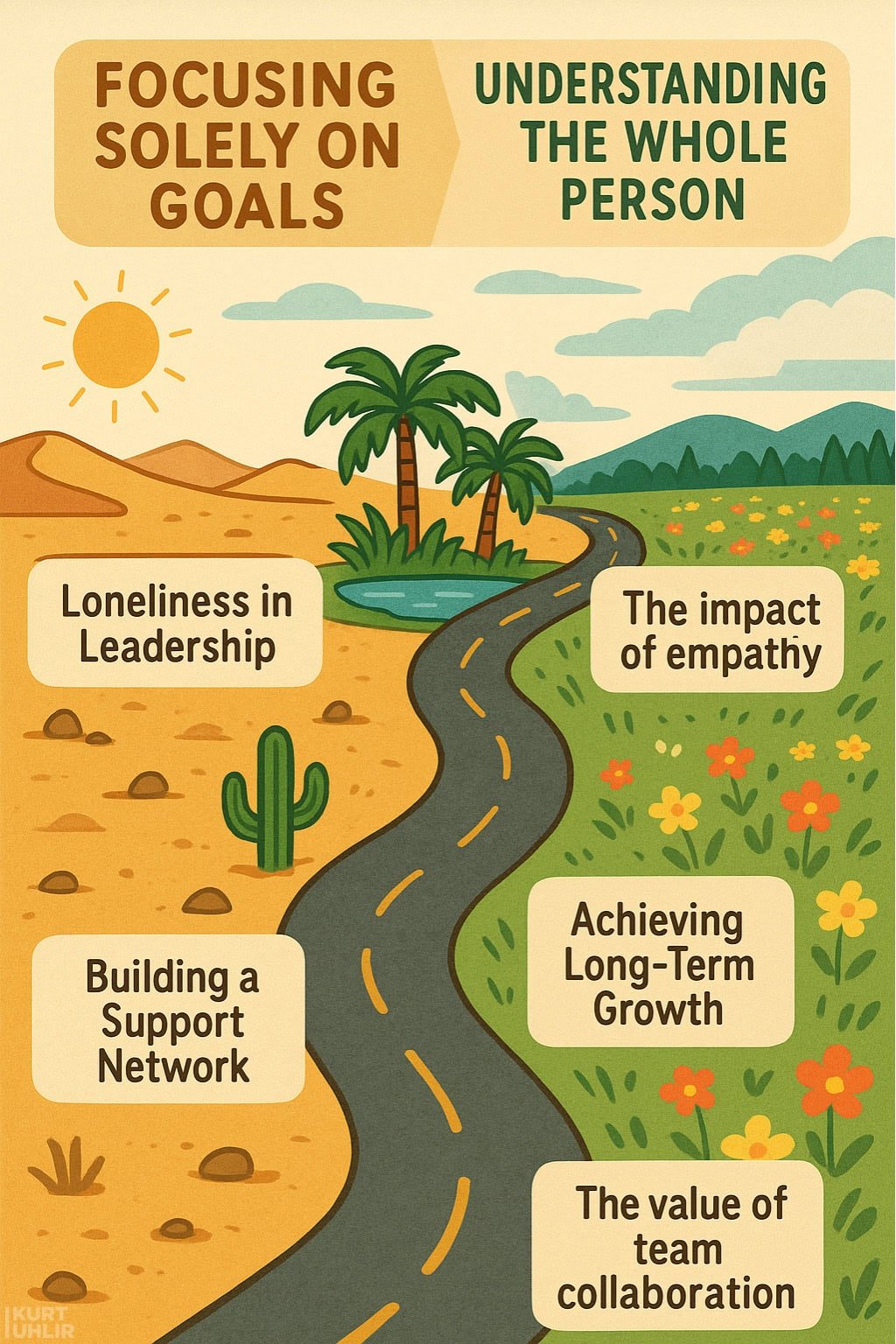
Redefining Servant Leadership: It’s Not Altruism. It’s Results at Scale.
Let’s set the record straight: servant leadership isn’t about being nice, soft, or a pushover. (If anything, it’s harder—because it requires you to care and execute at the same time.)
Cathleen has seen leaders who want a separation between “professional” and “personal,” managers who refuse to engage anyone’s reality outside of OKRs or P&Ls. That’s broken. We talked at length about how the best leaders, the ones who last and build cultures that outlive them, recognize you bring your whole self to work—and so does every person on your team.
Here’s how I define it:
- Authoritarian leadership is binary: do what I say, how I say it, or there’s the door.
- Servant leadership is binary in the opposite way: as a leader, my job is to define clear outcomes, hire people better than me, and serve them in achieving those outcomes. I don’t tell you “how.” I clear blockers, remove ambiguity, and fight for your success.
But I always bolt on “high-achieving,” because most books or frameworks miss the point: this isn’t about being a humanitarian.
It’s about sustainable, repeatable, amplifiable performance. The best teams don’t just “feel good” about their culture—they win more, out-last their competition, and can take a punch when life hits hard.
Cathleen pushed me: “What makes high-achieving servant leadership distinct?” For me, there are several real differences:
- The bar for performance stays high. Caring about someone’s well-being isn’t at odds with holding them to outcomes. You can—and should—do both.
- Systematize grace, not just process. Sometimes people need 60 days off to handle life. Sometimes they’ll outperform for years, but only if they know you’ll be there at their low points too.
- Build organizations where truth rises up. Most leaders think they know what’s happening. Bad information doesn’t travel up. Good leaders create psychological safety so people warn you when things are off—even if you (or your ego) won’t like it.
As I shared, my relationship with Judson Green—former Disney Theme Parks president—taught me this. He recruited me to be an internal source of what was happening inside our company, as one of ten sole contributors in a massive organization, under the condition I’d always give him raw information (“just the facts, Kurt”) and never reveal our relationship. He needed the truth from every layer of the org, knowing that sugarcoated versions bubble up in systems that punish candor. In exchange, he opened doors for me and later became a mentor after we had both moved on from the company.
That is high-achieving servant leadership: ruthless about results, relentless about listening.
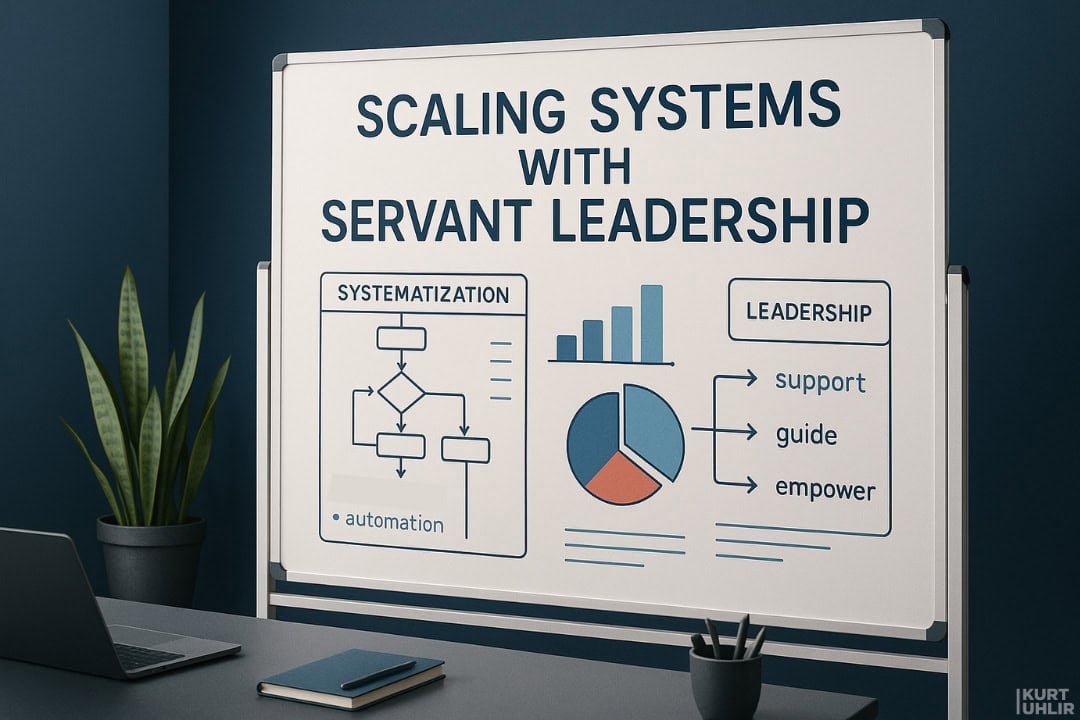
The Real Work: Hard Conversations, Humility, and Multiplying Talent
Some of the hardest pivots in leadership aren’t about deploying new strategy. They’re about letting go of your own need to be right, or to be liked, and learning to listen for what’s not being said.
Cathleen is direct about this—healthy confrontation is not natural in most organizations, and it’s undervalued. As she said, “A lot of managers avoid a healthy confrontation. Not saying you did…” and frankly, I’ve avoided it at times too. But creating an environment for truth-telling isn’t optional anymore.
Here’s how I work it:
- Gut-feel check-ins: In every meeting, I intentionally ask, “What gut feeling do you have that something isn’t working?” This lowers the bar for candor, especially for people less likely to challenge authority.
- Modeling error: If I blow it—if my approach or tone stirs up old wounds, if I miss the mark—I talk about it openly in all-hands and team meetings. I’ve had team members bring receipts where I was part of the problem, and I center that vulnerability because nothing unlocks healthy confrontation quicker than a leader owning mistakes.
- Coaching, not just correction: Sometimes I’m not the right person to solve interpersonal disconnects. I’ve invested heavily in bringing in executive coaches or leveraging tools like the Berkman assessment, not as a formality but as a lever for growth. I’d rather salvage and transform a high performer than burn them out or drive them off just because our personalities clash.
- Don’t fear letting people go—but do it with clarity and context: Not everyone is coachable, or coachable by me. The difference is, now when someone isn’t a fit, they leave with their dignity—and I stay in touch, rooting for their success, even rehiring them down the road.
All of this is uncomfortable—especially if you’re used to being the smartest person in the room. But it’s the real work of multipliers, not bosses.
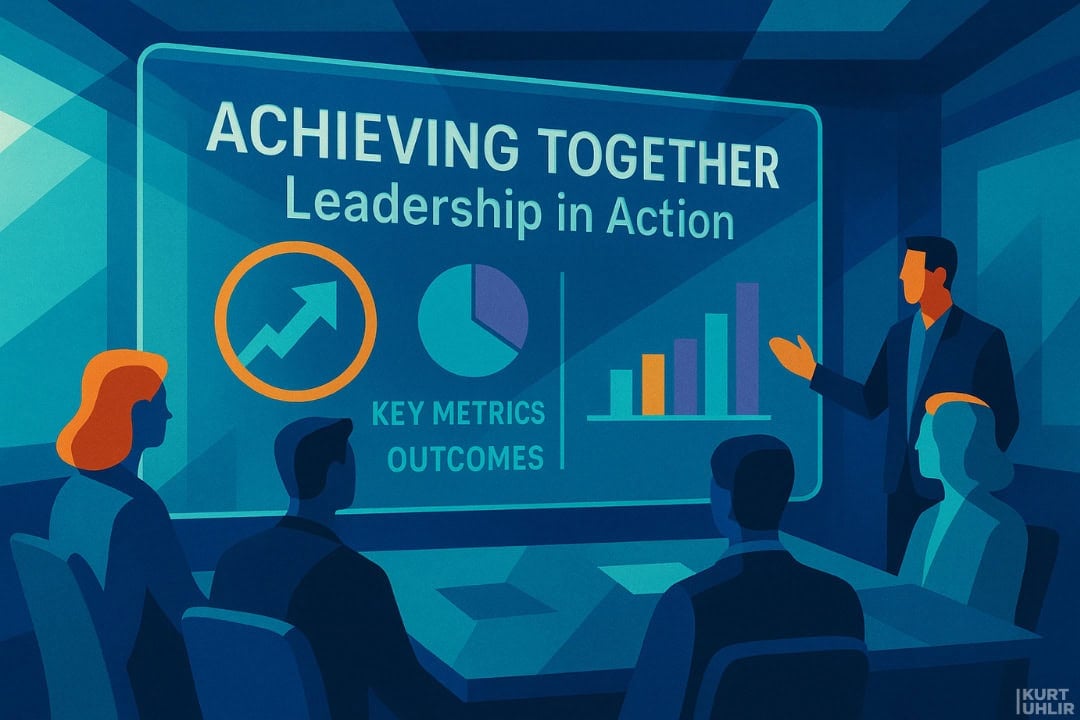
Modern Marketing: Why Operators Beat Agencies
You can’t scale a modern business if you’re stuck in yesterday’s playbook—especially in marketing. This was another area of strong alignment with Cathleen. “A lot of people still believe marketing is just posting on social, responding to comments,” she said, “but there’s so much more to it.”
I break it down simply:
- Social posting is not marketing. It’s activity, not outcomes. If you’re running a SaaS platform or B2B tech company, and your social posting isn’t driving commercial conversations or revenue, you’re wasting resources.
- Systems thinking wins. The best CMOs I know weren’t ad agency creatives. They were engineers, lawyers, ops people who taught themselves marketing. They obsess over processes, measure what matters, and build repeatable engines. That’s who I hire, and that’s what I bring as an interim or embedded executive.
- Customer voice is table-stakes. Every company thinks they know their customer personas, but in reality, most have three versions: one in marketing, one in product, one in customer success. My rule: the customer success team has ground truth on usage and pain—build your personas from their data, and then unify the organization.
- Data > politics. If sales presentations are getting changed in the field, lock them down until you know exactly why. Insist on documentable reasons for every change. It’s not draconian—it’s the only way to identify scalable wins instead of letting random “heroics” pollute your market message.
The same rules apply whether you’re bootstrapping a startup or operating across six continents.
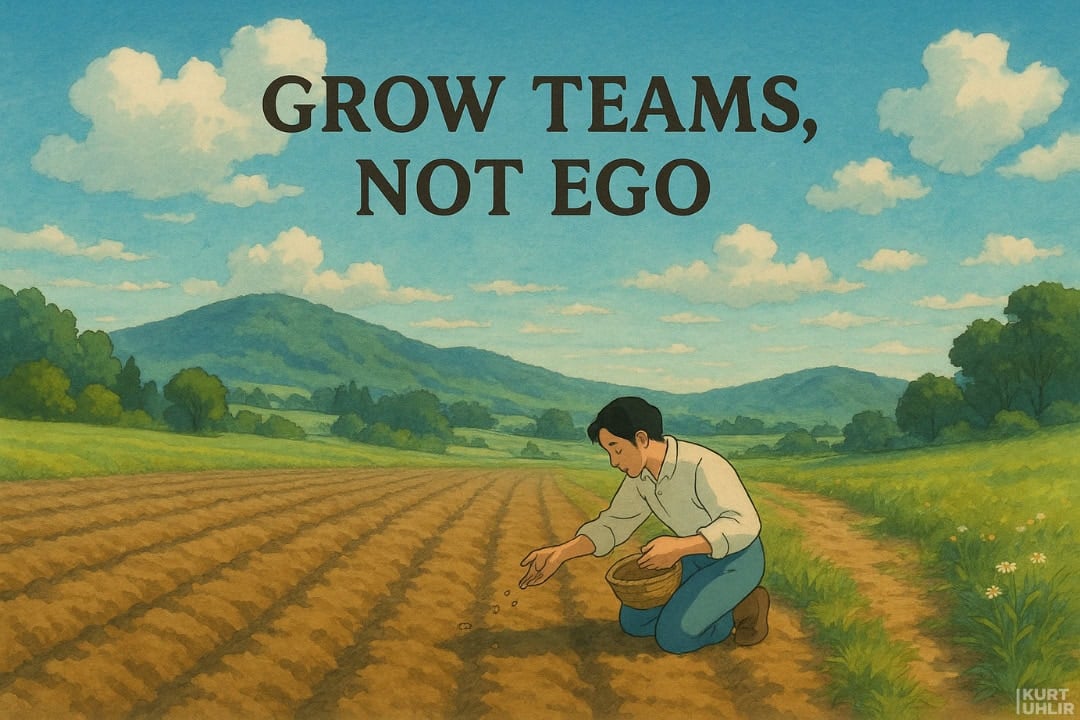
The Peak Isn’t the Point: Multiply Yourself, Build What Lasts
Now? My ambition is to be a multiplier. Cathleen joked about my Trello obsession—I do love optimizing tools—but tools are secondary to this: how many people can I develop, model high-achieving servant leadership for, and send out to build better organizations?
If you take nothing else from this story, let it be this:
- Execution will beat ideology, but servant-leaders who execute win the long game.
- You are replaceable—but your approach to people, your ability to build systems that self-heal and scale, is what outlives you.
- Systems create freedom; healthy confrontation grows resilience; clarity beats control—every single time.
Sometimes the sun rises over the mountain and you get to see the whole valley. Other days it’s dark and you’re swinging an axe, seeing only the work at hand. Find the pattern, build the system, leave room for people to be human, and you’ll outlast the noise.
Let me know what resonates, what challenges you, or where you see things differently. The best conversations don’t end at the mic.
– Kurt
If this conversation sparks something for you—questions, pushback, or agreement—I’d love to hear your thoughts in the comments below. I read every one.
Questions to Consider
Here are 10 discussion questions pulled directly from this episode’s themes and stories:
- Kurt discussed how his approach to leadership shifted after key triggering events in his life. What resonated most with you about his journey from a high-pressure, results-at-all-costs leader to a high-achieving servant leader?
- The conversation touches on the difference between “authoritative” and “servant” leadership. Where do you see yourself on this spectrum, and how has your style changed over time?
- Kurt mentions that posting isn’t the same as marketing and stresses the importance of systems and intentionality. How do you see these principles play out (or fail) in organizations you’ve been part of?
- He describes building companies and teams as essentially “operating factories” focused on outcomes—a very systems-driven approach. How would you balance process discipline with human creativity and flexibility?
- The episode highlights how pain points and messiness in leadership often come down to a lack of trust, transparency, or healthy confrontation. What are practical ways you’ve encouraged honest conversations on your teams?
- Kurt and Cathleen both point to the “whole person” concept at work. How do you personally decide how much of your personal life to share in a professional setting?
- The conversation on marketing avatars and internal misalignment—where sales, marketing, and customer success all have different ideas of the customer—was pretty eye-opening. Have you seen this lack of alignment in your work, and what did it cost the organization?
- Kurt reflected on letting go of control and empowering others, even if that means stepping back or using tools like Trello to track progress. How do you personally manage your need for control versus empowering your team?
- The episode explores how “servant leadership” can sometimes be misunderstood or dismissed as ‘too soft.’ Have you encountered resistance to this model, and how did you address it (or how would you)?
- Finally, the idea that relentless execution—and the courage to have tough, honest conversations—matters more than just ideas or intentions runs through the entire discussion. How do you keep yourself and your team executing, especially when things get uncomfortable?
These questions should spark deeper, real-world dialogue on leadership, team building, execution, and growth.
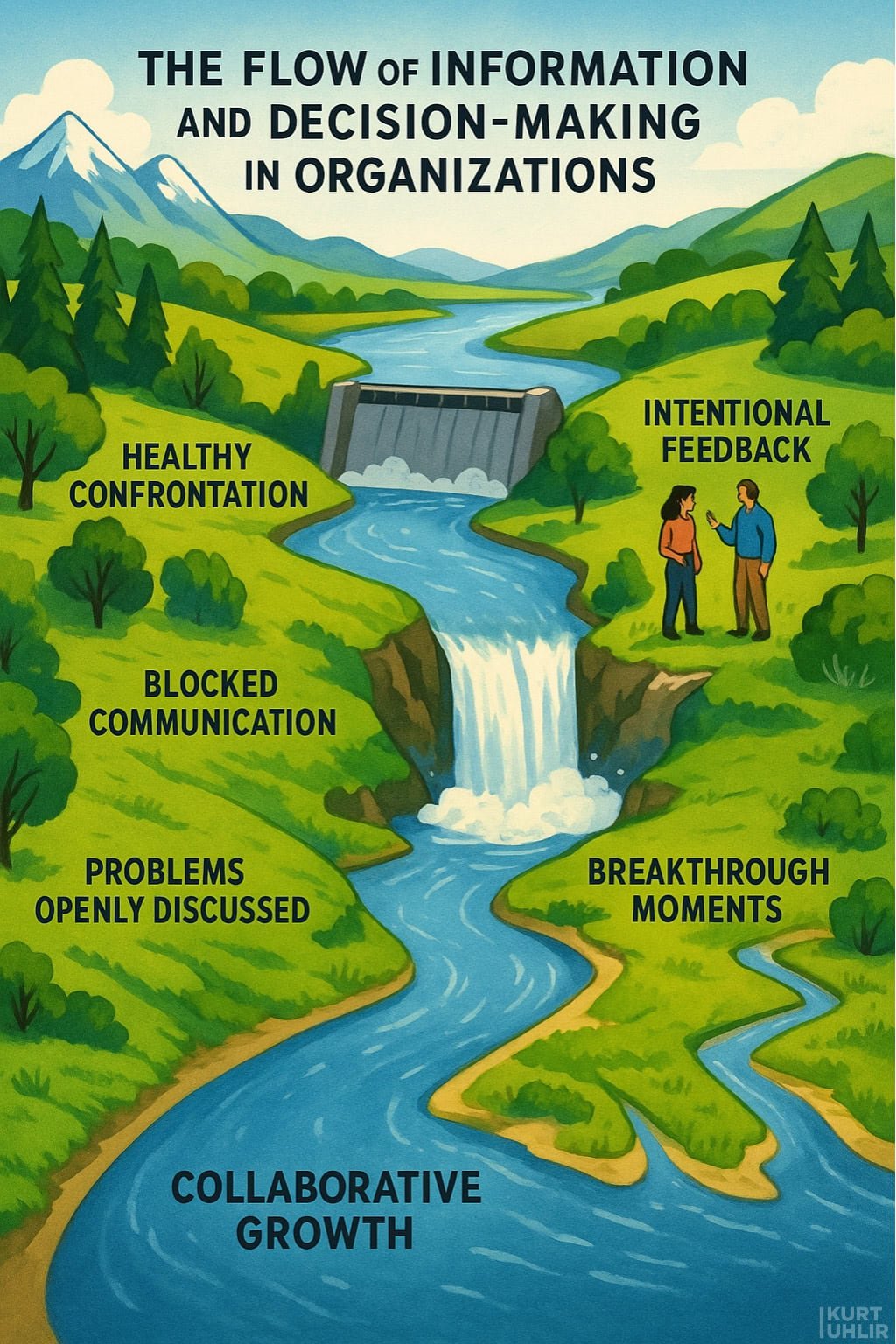
Memorable Cathleen O’Sullivan Quotes
- “The Trello board for the wedding planning is the most romantic thing I’ve ever heard of. Seriously!” – Cathleen O’Sullivan
- “I’m a strong believer in you ‘bring your whole person to work’. And there are loads of white papers out there about this topic – that our professional life impacts our personal life and vice versa.” – Cathleen O’Sullivan
- “Servant leadership has often been communicated to me as we are avoiding the uncomfortable truth. No, it’s a massive part of it. You have to speak openly and truthfully.” – Cathleen O’Sullivan
- “Once you stop, once you listen more, once you see patterns, once you seek to understand, to truly understand your customers, you will notice the shift that this creates in business.” – Cathleen O’Sullivan
- “Quite often we don’t really start with ourselves, getting some feedback on the impact we have on others, the behaviors we encourage and we demonstrate, the support we offer to others.” – Cathleen O’Sullivan
- “I love gardening. Never realized that I would ever say that but I really love it for all the reasons you’ve just mentioned. And it gets me into flow right away as well. I can lose track of time and thoughts and. And anything really.” – Cathleen O’Sullivan
- “Leadership, the way I learned about it many years ago, was all about being there in service of your people.” – Cathleen O’Sullivan
- “Our professional life may impact our personal life and vice versa. Yet there are still so many managers I talk to who say I don’t want to hear anything about the personal issues of my people and nor will I share any of mine.” – Cathleen O’Sullivan
- “There might still be disagreement. There might still be, may still be different opinions, which is absolutely fair, but we can discuss them more openly and constructively.” – Cathleen O’Sullivan
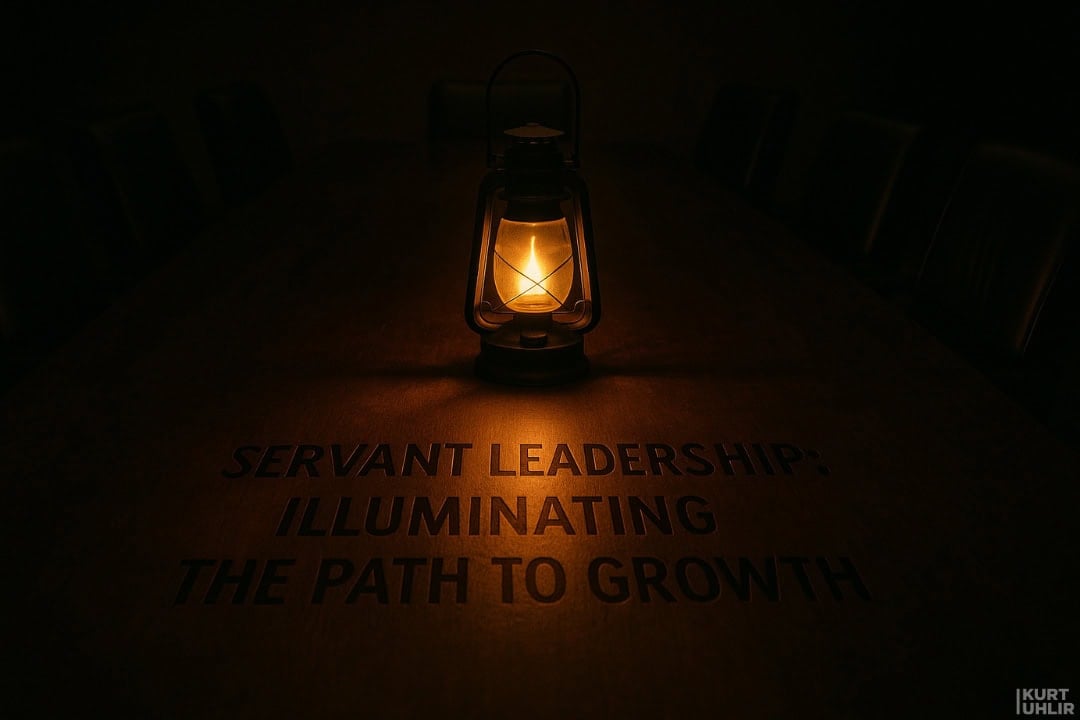
Memorable Kurt Uhlir Quotes
- “My job as a servant leader is not to tell you exactly what to do. My job is to set the outcomes and then serve you to hit those outcomes as quickly and as well as possible.” – Kurt Uhlir
- “Too many teams confuse motion with momentum. What actually moves the needle? Systems. Prioritization. Leadership that gets out of the way.” – Kurt Uhlir
- “I thought if somebody cried at work, that was on them. If the whole team cried, that was on me—that meant I dialed it up too hard. Looking back, that was not healthy.” – Kurt Uhlir
- “Leaders often fail because they don’t define real outcomes. Saying the goal is to ‘be the industry leader’ is meaningless. Get concrete. What’s the actual result we’re driving toward?” – Kurt Uhlir
- “Long-term success comes from serving others while relentlessly driving toward results.” – Kurt Uhlir
- “We did this audit to go through just a week of his life and he realized he was the authoritative leader and that people may not have been openly scared of him, but people were doing what he said, how he did it, and he was holding back a lot of growth in their company.” – Kurt Uhlir
- “Your customer success team knows who’s actually using your product, what features they’re actually using, what problems they’re solving. If your product solves problems, but they’re not using it, you’re CS team has ground truth for tens of millions of dollars of annual business. It is possible your marketers created a bad message or the salespeople are selling functionality that doesn’t exist.” – Kurt Uhlir
- “If you want to know something—read eight books on the subject and then figure out what you actually believe. Never assume one author is right.” – Kurt Uhlir
- “A lot of people are very conscious of budgeting every dollar, but my wife and I try to do that with our skills and our time as well.” – Kurt Uhlir
- “You need to make room for real life. Outcomes matter more than hours.” – Kurt Uhlir
- “What happens when your best performer hits a life crisis? Wouldn’t you rather have them at 50% for a while than lose them forever? Authoritative leaders don’t think like that.” – Kurt Uhlir
- “If you want to build a resilient culture, you can’t treat people as disposable. When they hit rough patches, that’s when they need your support most.” – Kurt Uhlir
- “What I realized is, I was great at hitting numbers, but I was very lonely. Nobody cared what was really going on with me—and that’s a problem.” – Kurt Uhlir
- “Modern marketing works on tools, on knowing how to run programmatic ads, on thinking in systems. It’s not about catchy slogans anymore—it’s about executing at scale.” – Kurt Uhlir
- “If you don’t give people the safety to fail, they’ll never try anything new. My dad created that safety net for me as a kid—I try to do the same for my teams now.” – Kurt Uhlir
- “I care much more about what gets accomplished than how many hours someone worked. You want results? Focus on outcomes, not optics.” – Kurt Uhlir
- “I used to chase attention and acclaim from everyone around me. Turns out, the more you accomplish for applause, the emptier it feels.” – Kurt Uhlir
- “I systematize everything. You build the factory, you hand off the controls, and then your job as a leader is to serve the team running it.” – Kurt Uhlir
- “I’ve made more progress giving up control and empowering others than I ever did micromanaging. That’s how you 10x results.” – Kurt Uhlir
- “Great leadership means your team can tell you when you’re wrong. If you only ever hear good news, you’re the last to know when you’re off track.” – Kurt Uhlir
- “I’ve found the single most important thing for business growth isn’t creativity or vision—it’s relentless execution and operational clarity.” – Kurt Uhlir
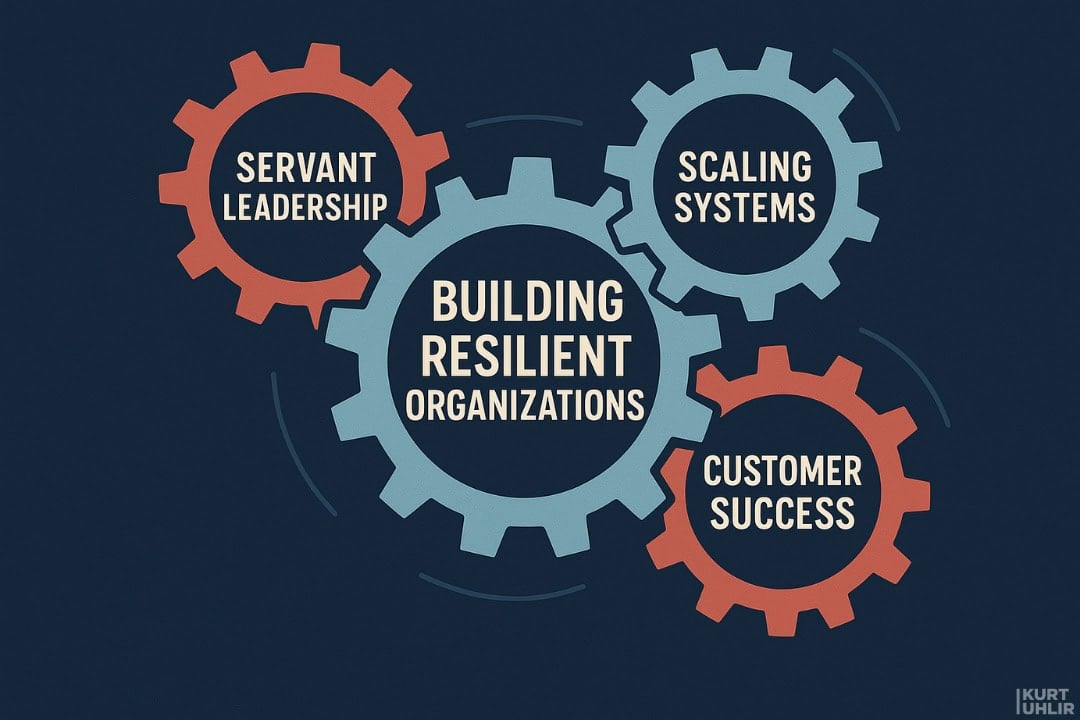
Companies, Products, or Services Mentioned
- Trello (project management software)
- Monday.com (project management software)
- Google (company, referred to in the context of Google search and patents)
- Microsoft (company, patents and technology)
- NASA (as a source of white papers for self-education; not a product/service)
- Zendesk (customer service/ticketing software)
- Popeyes Louisiana Kitchen (as a company case referenced in leadership discussion)
- Saab (referenced via leadership case)
- Herschend Family Entertainment (company case referenced via leadership discussion)
- National Speakers Association (professional membership organization)
- Apple (referenced by Kurt as a company who used systems he built)
- Meta (same as above)
- Birkman Assessment (personality/communication assessment tool)
Books Mentioned
- Good to Great by Jim Collins
- Dare to Serve: How to Drive Superior Results by Serving Others by Cheryl Bachelder
- Love Works: Seven Timeless Principles for Effective Leaders by Joel Manby
- The Boy Crisis (subject of a book Kurt’s wife read; full author not mentioned in transcript)
